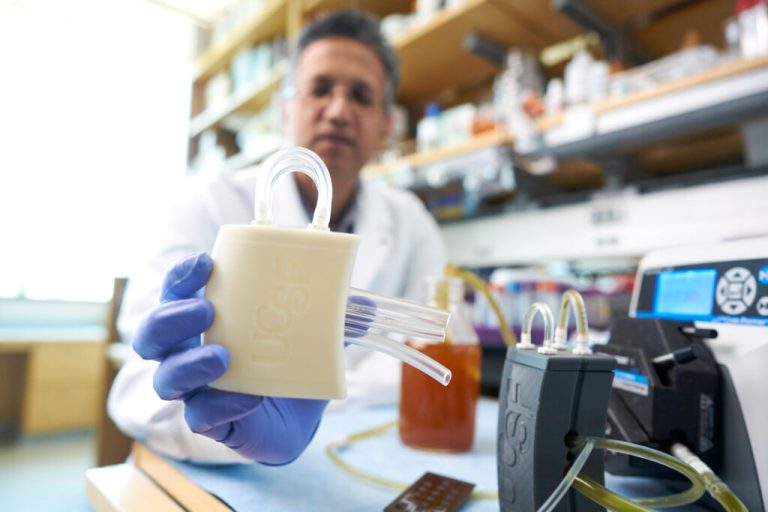Fast fashion is not traditionally known for being made with the health of the planet in mind, but researchers have discovered a practical and powerful way to mitigate the ecological damage of the industry. They’ve designed a slippery, silicon-based fabric coating that helps reduce the amount of microplastics entering the waterways from washing machines — a potential milestone in the pursuit of a less plastic-polluted future.
“We call it a primer, like when you’re priming a wall to paint it,” Kevin Golovin, one of the authors of the University of Toronto study, told Fast Company.
But instead of a primer for walls, the coating primes clothes, particularly pieces made of synthetic materials like polyester, nylon, acrylic, and rayon, which are notorious for releasing microplastics during laundering. A 2019 study cited that washing synthetic textiles was the main source of “primary microplastics in the oceans”; and a 2016 study estimated that over 700,000 microfibers could be released for every average (13.2-pound) laundry cycle of synthetic fabrics.
The main problem is that these microplastics can take hundreds or thousands of years to break down — making the need to combat microplastic pollution all the more crucial.
This new discovery is shown to help break that cycle. Per a report from U of T News, Golovin and his team “created a two-layer coating made of polydimethylsiloxane (PDMS) brushes, which are linear, single polymer chains grown from a substrate to form a nanoscale surface layer.” The researchers found that it decreased the shedding of plastics from nylons during wash cycles by more than 90% after nine washes by reducing the friction of the clothes (in both wet and dry situations).
According to the study published in Nature Sustainability last month, “Low-friction fabric finishes provide a green route for the design of synthetic fabrics and could help the textile industry transition away from its current, unsustainable practices.”
RELATED: “Hold the Plastic, Please”: New Free Guide Helps Restaurants Reduce Plastic Use
Using PDMS on clothes is new, but the coating itself is not: It’s commonly used to make shampoos slick and it’s also found in food oils.
While this coating is a more sustainable alternative compared to polymers derived from petroleum, Golovin told Fast Company, “I wouldn’t say it’s the world’s most environmentally friendly material because it doesn’t degrade. But it also is completely chemically inert,” meaning it’s not generally reactive.
This is important for the durability and aesthetics of the clothes, as this fabric coating doesn’t compromise the look and feel of the materials. Now, the team is working to ensure it can adhere to clothes made of multiple types of fibers, and improving the coating’s ability to wick away sweat.
Companies like Patagonia and Lululemon have already expressed interest in the coating, Fast Company reports, which Golovin calls a solution rather than a temporary fix.
“When we look at what governments around the world are doing, there is no trend towards preventing the creation of microplastic fibres in the first place,” Golovin told U of T news. “Our research is pushing in a different direction, where we actually solve the problem rather than putting a Band-Aid on the issue.”












